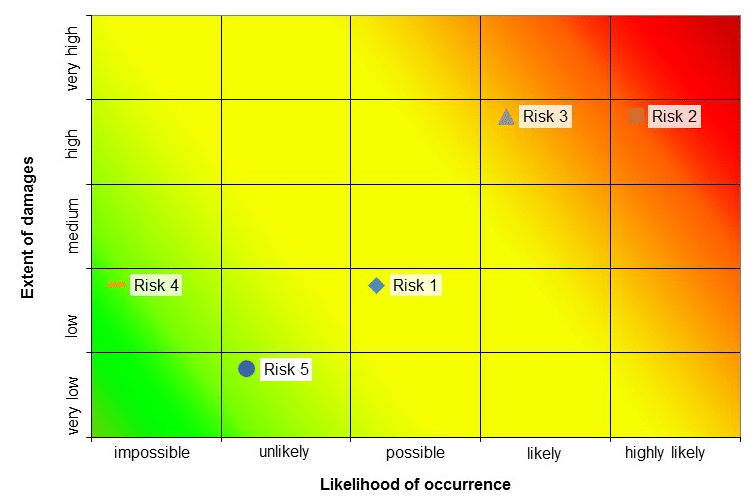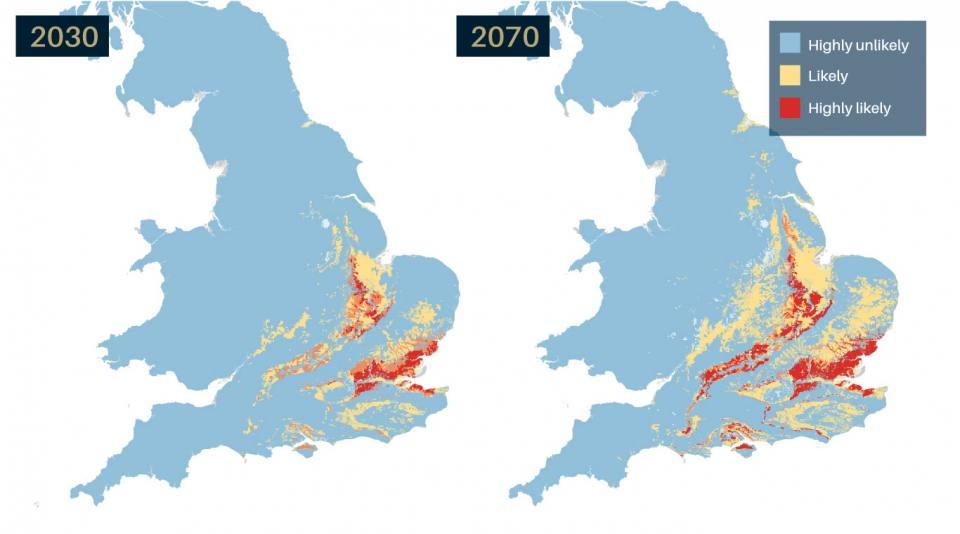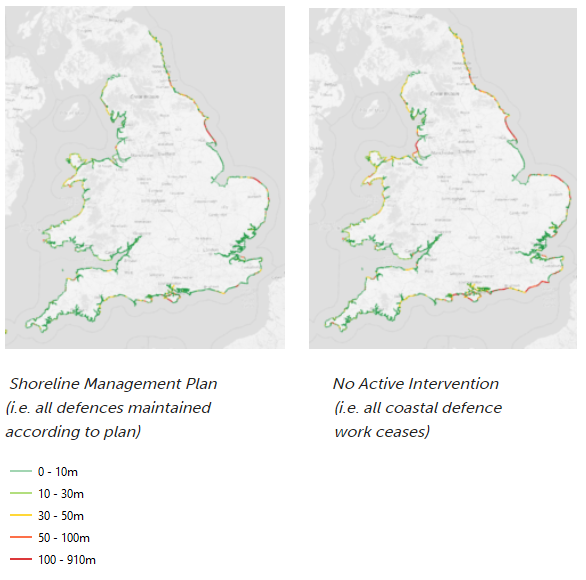Groundsure: Which geo-environmental risks should property lawyers (and our clients) be most concerned about?
Stephen Sykes, Solicitor and Environmental Lawyer, has written a blog for Groundsure on which geo-environmental risks property lawyers and clients should be most concerned about.
Lawyers and Environmental Data
My fellow solicitors and their Professional Support Lawyers sometimes tell me they feel besieged by an ever-increasing number of different types of environmental reports which they are required or encouraged to commission. Reports for flooding, contaminated land, ground stability and other types of geo-environmental risks. There are now separate reports for climate risk, albeit of variable quality. There seems to be an endless tide.
“We’re not environmental data scientists” they say. Some wish they did not have to commission reports which they rarely read and feel that they are not technically qualified to interpret. But there are real risks for solicitors and clients alike if a head-in-the-sand approach is taken, as I seek to explain in the first of a series of blogs.
Solicitors do need to engage with this not least because environmental risks could become more manifest as a result of climate change.
As former UK Supreme Court Justice, Lord Carnwath has commented:
“Lawyers have a special role to play in taking us from climate ambition to climate action. They can lead the way both by their own business practices and the example they set to their clients, and by ensuring that climate issues are at the heart of the thinking behind the legal transactions and documents on which they are advising.”
So, yes, solicitors are not environmental consultants, but we are not lay people either. All real estate solicitors are going to have to get to grips with this by understanding the impacts that geo-environmental risks in a changing climate will have on land and buildings – including significantly increased number of properties being impacted by subsidence and flooding in particular. They will also need to understand how their duty of care to real estate clients applies to long term climate risks which we touch on below and will consider in a future blog. We start though by considering the nature and extent of geo-environmental risks as they stand today.
Thinking about Risk – Frequency of Occurrence and Magnitude of Harm
First of all, let’s step back and consider the nature of risk so we can start to understand why some geo-environmental risks are much more important than others.
Risk is the possible occurrence of an adverse event. In the context of geo-environmental events, this includes all types of flooding, coastal erosion, contamination, subsidence, and other adverse phenomena which have an adverse impact on the use and enjoyment of land and buildings.
Risk consists of two elements – a) the probability of incurring a loss; and b) the magnitude of that loss which is typically expressed in monetary terms.
As we will see, some geo-environmental events are many times more likely to occur than others – and some events have a much more serious financial impact than others. It is useful for solicitors to be broadly aware of this when advising clients.
By way of illustration, if the probability of a particular geo-environmental event is very low (e.g., 1:10,000 event), and the magnitude of loss manifesting from that event is also relatively low (e.g., £5,000), then the occurrence of such an event would not be an overly concerning matter for most clients to accept. It would not, for instance, be sufficiently significant for them to withdraw from a potential purchase of the property.
If, however, the magnitude of loss that could be caused by the geo-environmental event is very significant, say a £1m property has a 1:1,000 chance of collapsing into the sea as a result of coastal erosion, then even though this may be a highly remote outcome, the risk may dissuade many prospective purchasers from buying the property. Likewise, this may dissuade many lenders from offering mortgages for properties in such vulnerable locations.
Flooding and Subsidence – the main geo-environmental risks:
The main geo-environmental risks that impact or threaten to impact by far the largest number of properties in the UK are flooding and subsidence. This is well understood by the UK’s mortgage providers.
Flooding
There are 28.1M homes in the UK, increasing at more than 200,000 per year. A remarkable number of these are exposed to flooding and with climate change already leading to much wetter weather across the UK, the numbers are only going to increase.
According to the Environment Agency, 5.2 million residential properties in England are currently at risk of flooding, together with commercial properties and important infrastructure facilities. SEPA estimates 284,000 homes, business and services are at risk of flooding in Scotland. A similar number applies for Wales. 45,000 homes are at risk of flooding in Northern Ireland. SO, the UK total of at risk homes is a staggering 5,774,000 with climate change set to add to this number as we will see in our next blog.
So, the stark consequence of this is that conveyancers will be transacting homes which have a 1 in 5 chance of being exposed to flood risk. The issue is just as applicable to commercial property lawyers with Aviva estimating that 1 in 3 commercial properties are at risk of flooding. The average cost of a flood claim to insurers is £50,000.
With such a prominent risk facing their clients, it is clearly advisable for real estate solicitor to have a good understanding of flood risk in its various forms, especially from rivers (the main source of flood risk).
Subsidence
According to the British Geological Survey (BGS) the number of homes in Britain which are highly or extremely likely to suffer “shrink-swell” was 3% in 1990 (750,000 homes) and is predicted to grow to 6.5% of buildings by 2030 (1.625M homes).
By the end of the century 5% (1 in 15) of properties are going to be materially exposed to this risk, with up to 57 per cent of properties in London affected by 2070 and significant numbers in the East and South East of England as the following BGS map shows:
Other geo-environmental risks impact far fewer numbers of properties. So, for example, extreme weather events will contribute to the speeding up of coastal erosion around parts of our 7,500 miles of coastline. Approximately 12,800 properties around the UK are currently exposed to significant risk of damage or destruction from coastal erosion. This number is set to increase dramatically over the coming decades due to climate change, but it will only be a tiny fraction (under 2%) of the number of properties impacted by flooding and subsidence.
Conclusion
Flooding and subsidence are by far the major geo-environmental risks impacting UK land and buildings. The numbers speak for themselves. To avoid the prospect of incurring liability for negligence, a prudent solicitor will include within their Report on Title to their client a summary of the purpose of the data contained within the environmental report commissioned for the transaction. They will also add a short description of what further information could be obtained if it was required and a request for instructions as to how the client wishes to proceed.
The landscape on this is changing though and in the next blog we will start to consider how advice could also change, driven by climate change, based on the wider interests of stakeholders in the transaction.
Written by Stephen Sykes, Solicitor, LL.B, MA Environmental Law, Environmental Lawyer, Real Estate Department, Capital Law Limited
Note: Stephen Sykes is speaking at Groundsure’s Conveyancing Climate Change Conference to be held at Law Society on June 14th. This in-person event is free to attend. Speakers include the BBC’s Roger Harrabin, Professor Jason Lowe OBE -the Met Office’s head of climate risk and other nationally prominent speakers from UK Finance, the RICS, the Bar and the Law Society. To book your place, please click here.
References:
- https://chancerylaneproject.org/wp-content/uploads/2021/09/Net-Zero-Toolkit-v1.0-September-2021.pdf
- See, for example, Barclays p.28 of its 2021 TCFD Report; https://home.barclays/content/dam/home-barclays/documents/investor-relations/reports-and-events/annual-reports/2021/Barclays-TCFD-Report-2021.pdf
- https://www.ibisworld.com/uk/bed/number-of-households/44090/
- https://www.gov.uk/government/publications/flood-and-coastal-risk-management-national-report/flood-and-coastal-erosion-risk-management-annual-report-1-april-2018-to-31-march-2019
- https://www.sepa.org.uk/media/399172/nfra-faq.pdf
- https://naturalresources.wales/flooding/managing-flood-risk/flood-risk-management-programme/flood-risk-management-annual-report-2020-2021/?lang=en#:~:text=In%20Wales%2C%20there%20are%20estimated,in%208%20properties%20in%20Wales
- https://www.aviva.com/newsroom/news-releases/2021/09/one-in-three-business-properties-at-risk-from-flooding/
- https://www.insurancetimes.co.uk/abi-uk-floods-to-cost-insurers-13bn/1416942.article
- https://www.london.gov.uk/questions/2021/2256
- https://www.bgs.ac.uk/news/maps-show-the-real-threat-of-climate-related-subsidence-to-british-homes-and-properties/
Kindly shared by Groundsure
Main article photo courtesy of Pixabay






















